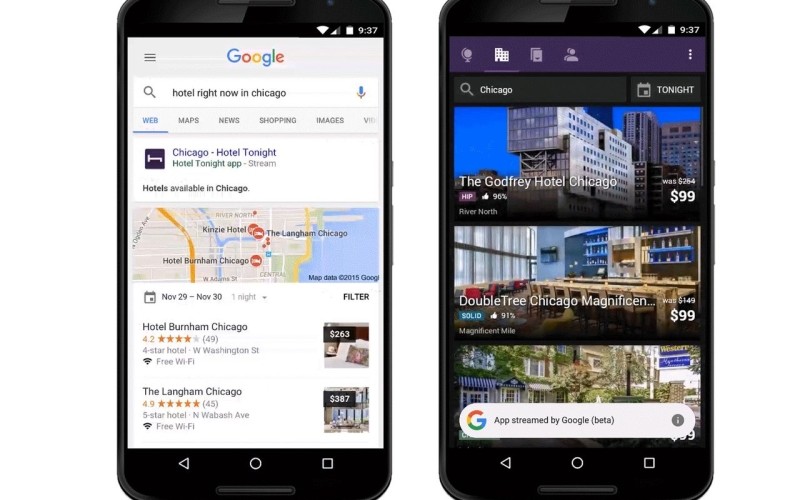“Imagine if, in order to use the web, you had to download an app for each website you wanted to visit. To find news from the New York Times, you had to install an app that let you access the site through your web browser. To purchase from Amazon, you first needed to install an Amazon app for your browser. To share on Facebook, installation of the Facebook app for your browser would be required.
That would be a nightmare. It would get even worse when you consider how this would impact search. Every day, millions of people are searching for answers to new things they’ve never realized they needed before. Each person could easily potentially encounter 10, 20 or more sites they’re directed to from search, that promise those answers. But if installing an app for each of those sites were required, the effortless way we currently enjoy web search would be a cumbersome mess.
This situation could have been the web today. For a short time before the web, it even seemed this was how online services would go. You had your AOL, your CompuServe, your Prodigy, your MSN — all online services that were disconnected from each other, some with unique content that could only be accessed if you installed (and subscribed to) that particular online service.
The web put an end to this. More specifically, the web browser did. The web browser became a universal app that let anyone open anything on the web. No need to download software for an online service. No need to download an app for a specific web site. Simply launch the web browser of your choice, and you could get to anything. Moreover, search engines like Google could point you anywhere, knowing you wouldn’t need to install any special apps.
The growth of mobile and its app-centric world has been the opposite of the web. Until fairly recently, there’s been no seamless moving between apps. If you wanted New York Times news within an app environment, you had to download that app. If you wanted to interact with Facebook easily on mobile, you needed the Facebook app. If you wanted to purchase from Amazon, another app was required (and even then, with iOS, you couldn’t buy because Amazon doesn’t want to pay the “Apple Tax” cut that Apple wants from any iOS app that sells things).
The situation is worse when it comes to search. Again, until somewhat recently, if you searched for content using Google, its mobile search results would tend to push you to mobile web pages. Often, that’s a perfectly fine experience. But sometimes, it might be nicer to go into an app. Worse, there’s a small but growing number of app-only publishers and services. They have no web sites and thus nothing for Google or other search engines to point you at from mobile search results.
Wouldn’t it be nice if you could move between apps just as you do with the web? Major companies like Google, Apple, Facebook and Microsoft certainly believe so. That’s why over the past two years or so, they’ve all been pushing things like Google App Indexing, Apple Deep Linking & Universal Links, Facebook App Links and Bing App Linking.
This is where Google’s big news today comes in. With app streaming, Google will effectively broadcast what you’re looking for within an app, without requiring you to download it at all. There’s no need to worry about whether you want to invest the time and bandwidth downloading some app for a one-time use. If it works as promised, you’ll be able to browse within apps with the same type of experience that you browse web pages.
You won’t get streaming if you’re using the Google App for iOS. Nor will you get it if you’re using Chrome on Android. Google says all this could change in the future, but right now, it’s still all experimental.
Aside from app streaming, but closely related, is that Google App Indexing is now finding truly app-only content. Previously, Google’s efforts only dealt with content that was also on the web. If there was a web page that could also be loaded in an app, Google’s system made use of behind-the-scenes links to launch the app to that same content. But if there was content that only existed within an app, Google couldn’t see that at all.
That’s where app streaming is important. It’s a bad experience to show links to an app that no one can view unless they install an app. But by combining app streaming with Google’s improved app indexing that can find app-only content, Google is providing a full solution to its search results. It’s able to find more content and ensure that anyone can view that content.”
To read the full article, visit Marketing Land.


Comments are closed here.